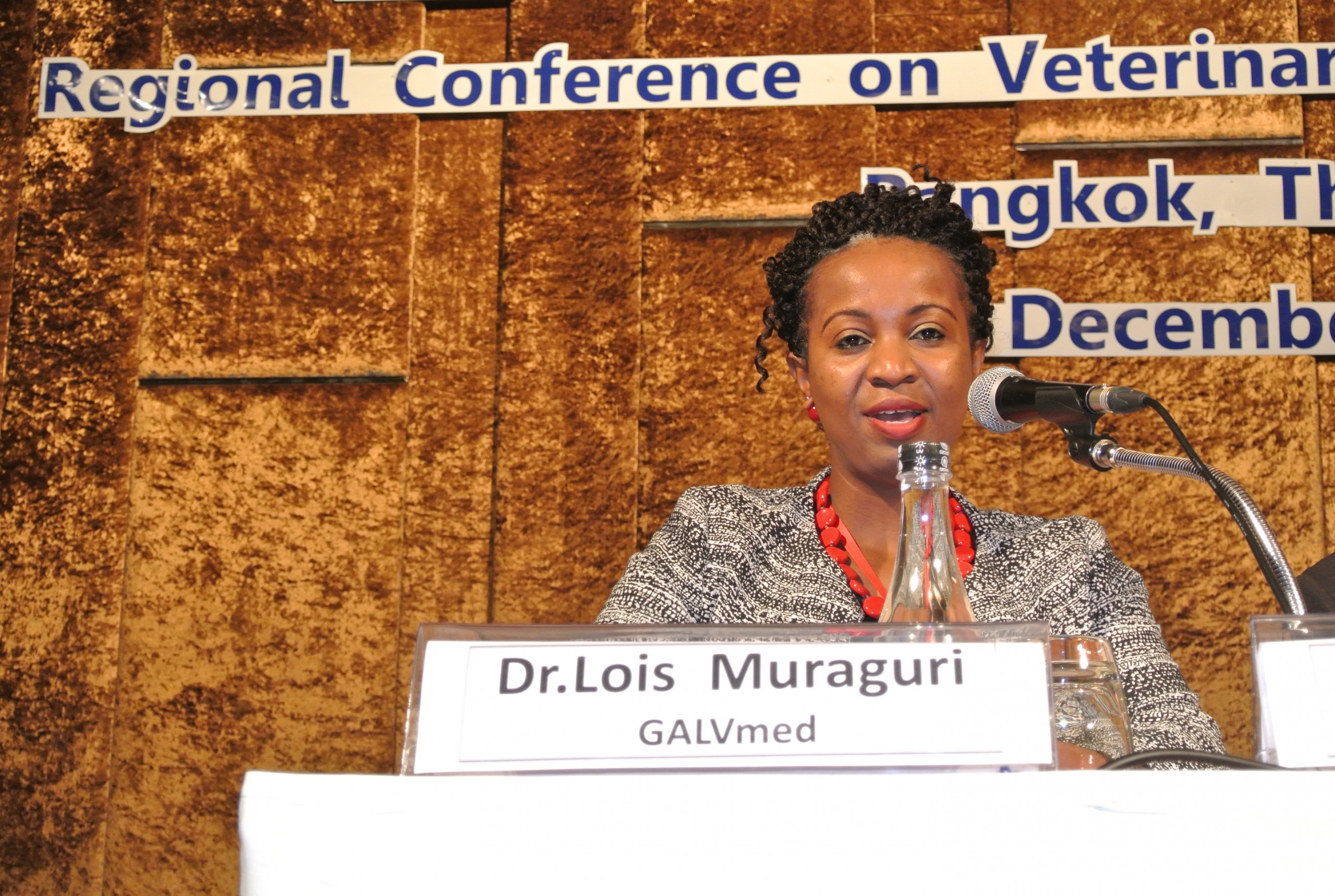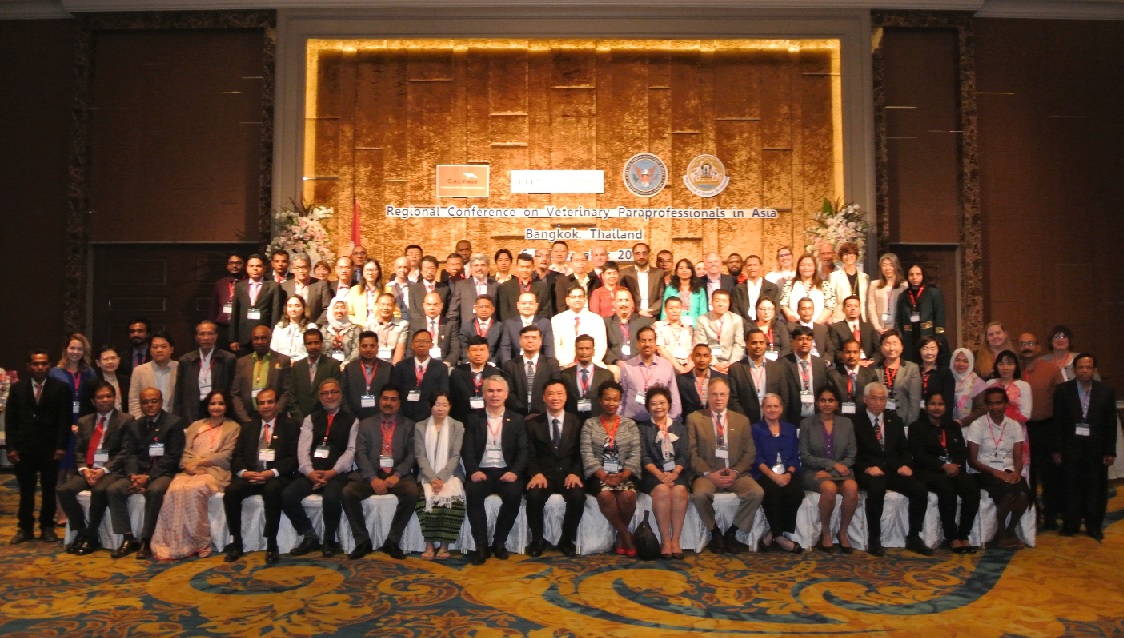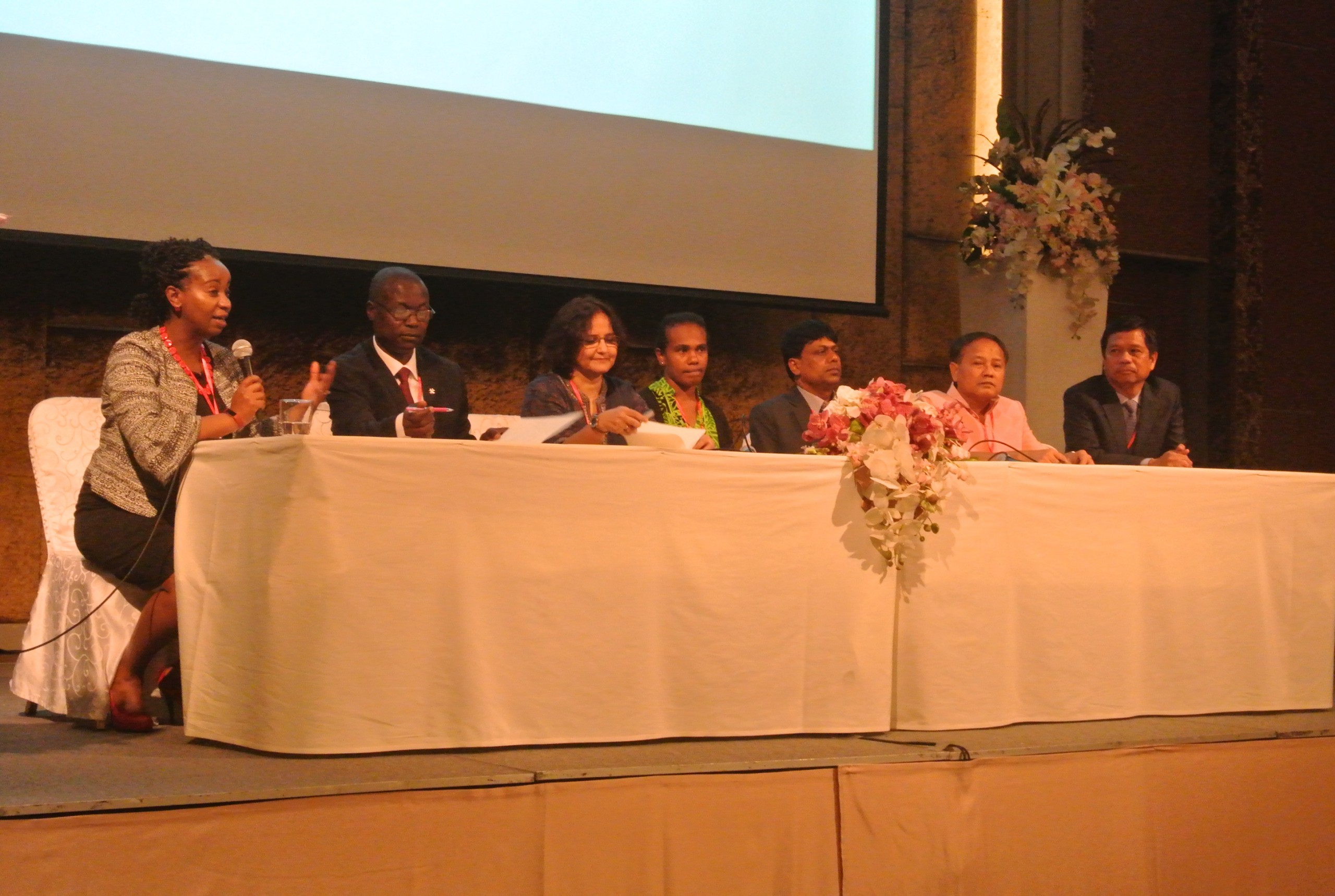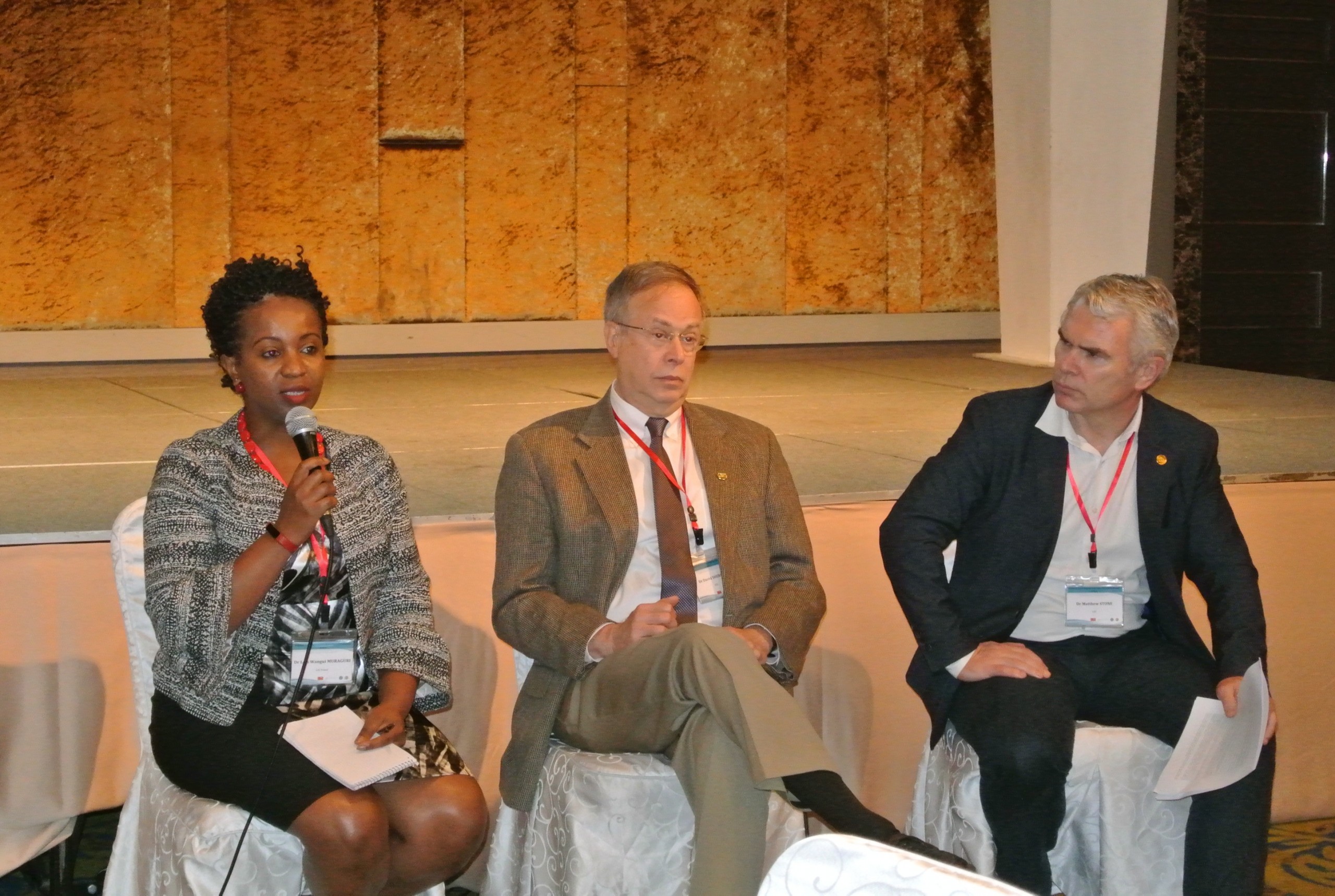


The Regional Conference on Veterinary Paraprofessionals in Asia was held in Bangkok, Thailand from 6 to 8 December 2017. A total of 94 participants attended the workshop, including representatives from veterinary authorities, VSBs, VPP associations and educational institutions for VPPs training of 23 OIE Member Countries, representatives of 13 relevant agencies, and OIE and GALVmed staff. The Conference started with the opening remarks delivered by Dr Lois Muraguri, Director of GALVmed, Dr Matthew Stone, Deputy Director General of OIE and Dr Wacharapon Chotiyaputta, Director of International Livestock Cooperation Division, Department of Livestock Development, Thailand.
Day 1 began with Session 1 on overviews of the GALVmed and the OIE. The GALVmed’s vaccine production and marketing for smallholders and the OIE’s sixth Strategic Plan were introduced. The OIE standards on the quality of veterinary services, veterinary legislation and Terrestrial Code definitions related to veterinary paraprofessionals (VPPs) were described. This was followed by Session 2 in which challenges and opportunities for VPPs in delivery of veterinary services in Vietnam, Afghanistan, the Pacific Islands, Mongolia, Myanmar and Indonesia were presented. Discussion was made after the presentations which provided a review of current situation of VPPs in Asia and how best VPPs can contribute to delivery of quality veterinary services in cooperation with other cadres. Day 1 ended with Session 3 on working group discussion. Participants were divided into six groups to discuss on linking veterinarians and VPPs with regard to the current existing relationships between veterinarians and VPPs in the public and private sectors, the specific mechanisms/actions to improve/strengthen these relationships, the countries/systems that offer best practice of a health complementary relationship between veterinarians and VPPs and how to address the OIE definition of VPP with regard to the term “under the responsibility and direction of a veterinarian”. The group discussion feedback was summarized as the followings:
Day 2 started with the recap of Day 1 and followed by Session 4 focusing on the regulatory and administrative frameworks for VPPs. This session included the presentations on Policy Perspectives in Delivery systems in rural and poor setting in India, the VSBs in Asia and Pacific region, the Regulatory and administrative challenges and opportunities for VPPs in Thailand, Napal and Vanuatu, and the Africa’s experience in setting up VPP associations. Session 5 was the round table discussion of the representatives from the FAO RAP, the Heifer International (Nepal), the GALVmed, the Hester Biosciences, the Brooke, Papua New Guinea and the AVSF on their perspectives on VPPs from the field. After that was Session 6, the training of VPPs in Asia and Pacific, which demonstrated the trainings of VPPs in India, Nepal, Afghanistan, Cambodia, Australia and some countries in the region i.e. Indonesia and Vietnam. The followings were the summary of presentations given in Day 2.
Day 3 started with the recap of Day 2, then following with Session 7 focusing on the work of the OIE ad hoc Group on VPPs competencies and core curriculum. The evolution of the OIE work on veterinary education and VPPs was elaborated. The results of global analysis of VPPs from WAHIS and PVS Pathway, and the VPP curricula were described and the preliminary OIE competencies for VPPs and the preliminary core curriculum for VPPs were introduced. Session 8 was the group discussion on roles of VPPs to ensure prudent use of antimicrobials. The main issue of discussion was if VPPs should be allowed to prescribe and administer antimicrobials and if so, what the regulatory conditions would be. Most participants greed that VPPs should be allowed to administer antimicrobial drugs under the veterinary supervision. However, for VPPs to prescribe antimicrobials, some participants disagreed and some had an opinion that if there is no veterinarian, VPPs should be allowed to prescribe under the condition that they should have well training and have commitment to use antimicrobial drugs properly. Then, the Conference ended with Session 9 on building consensus and recommendations on way forward. A draft recommendations of the Conference is as attached.



